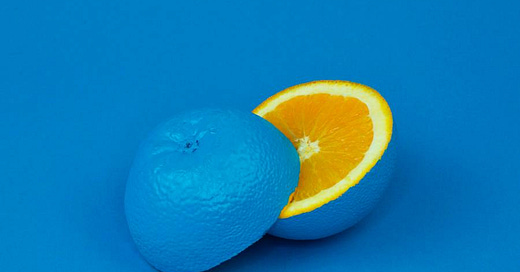Do you know what you're eating? Processed foods are made of ingredients you can't even pronounce, so how do you know what it is? Eating out is a whole other experiment in eating. Even when cooking your own dinner at home, do your ingredients have ingredients? What you don't know cost the consumer $40 billion dollars a year, in food fraud.
How Americans Are Tricked Into Buying Fake Food
One out of ten foods are in some way adulterated in some sort of food fraud. The pandemic forced more scrutiny into what is going on with our food system. Eight-five percent of the US seafood is imported and only 2% are inspected. Would you, as the consumer, know the difference between cod and another white fish?
Think about how many hands these foods go through from the farmer to the grocery store. The middle men for processing, importing and transporting provide so many possibilities for modifications to the original product. Just how great is our food safety?
Is the olive oil you buy really 100% Extra Virgin Olive Oil? How would you know if a little canola oil was blended into that bottle you just bought? Watch the video, you'd be surprised at what they found. Tumeric and other spices are adulterated. Saffron with flower stems? Parmesan cheese with wood pulp? Food fraud is motivated by economic gain with lower penalties than dealing heroin and makes a lucrative income. Things need to change. What you don't know, just might hurt you.
This book was mentioned in the video and I'm providing a link for your reference. Real Food/Fake Food: Why You Don’t Know What You’re Eating and What You Can Do About It by Larry Olmstead
Can You Trust the Label?
I shop the outer perimeter of the grocery store where the produce, meat and dairy is refrigerated. I prefer to purchase organic staples for my cooking and often resort to online or bulk buying from a community group I trust. When I do buy something from the grocery store I read the labels, especially the ingredients. I didn't realize the secrets of changing the serving size to eliminate the requirement to list an ingredient, such as trans fats, on the label...did you? This isn't the only deception to keep you in the dark.
Carrageenan is not only in foods, like dairy, dairy-free milks, ice creams, yogurts, sauces, creams, canned soups, pizza, and even deli meat? But did you know that it is in many toothpastes? The scientists use this red seaweed to test anti-inflammatory drugs with mice. Why do we need this in our food and personal care products? Why doesn't the FDA or someone in the government protect us from this stuff? Isn't that what our tax dollars are for? Isn't it their job to keep us safe? Apparently not. Even with all of these agencies in place, I still do my research.
Food Defense - the protection of food products from contamination or adulteration intended to cause public health harm or economic disruption
Food Safety - the protection of food products from unintentional contamination
Food Security - when all people, at all times, have both physical, social, and economic access to sufficient, safe, and nutritious food to meet their dietary needs and food preferences for an active and healthy life (Food and Agriculture Organization, 2014)
FDA vs. USDA
Food in the US is monitored by the FDA and the USDA, do you know who does what? North Carolina provided a break down of responsibilities that is easily referenced for the difference in these agencies and what they are responsible for in this PDF, Principal Food Safety Regulatory Organizations: FDA vs USDA-FSIS. I'm sure if you did an internet search for your state you would have the links to the laws in your state that govern any local responsibilities.
Did you know there is also a Food Defense division? The CDC and the EPA are also involved in our governmental bureaucracy, no wonder there is so much confusion and turmoil. It becomes easy to "pass the buck" to another agency when consumers call or write and start asking questions.
Food defense is the protection of food products from contamination or adulteration intended to cause public health harm or economic disruption.
The food system within the United States continues to increase in complexity, diversity, and reliance upon interconnected domestic and global systems. Concurrently, the threat landscape and potential sources of intentional adulteration continue to evolve and increase in complexity, which could ultimately have a powerful impact on public health and the economy.
Responsibility for the global food supply chain is shared across all levels of government (foreign and domestic) and through collaborative, public-private partnerships with industry. Developing comprehensive risk management systems to protect the food supply establishes a foundation for minimizing public health and economic impacts and ultimately promotes food security and resilience.
US Food Safety | Food Defense
I see that food safety and nutrition is in the news, just last week. On January 31, 2023 the Detroit Free Press published an article, FDA is revamping its food safety and nutrition division to move past 'constant turmoil'
What else do I need to convince you to be vigilant?
I encourage everyone to start a garden, buy from a local farmer you can trust. Stop buying from these corporations that are more interested in their profit margin than they are about your health. A good place to start your research is the Environmental Working Group's website to see what you should be educated about as a consumer when it comes to your food, cleaning and personal care products.
There are a few more inconvenient truths I'll be telling you in my future posts. I wanted to take the time to open your eyes if you didn't already know that it's all about greed. Now follow me and I'll tell you the truth. You deserve it.




